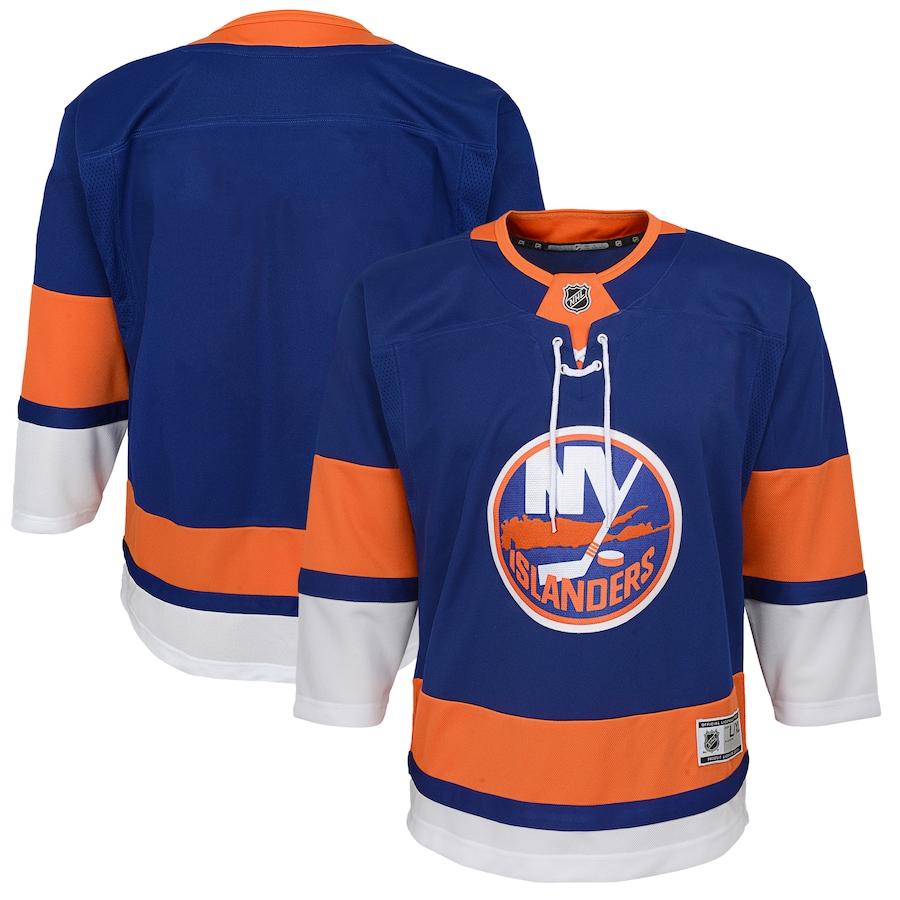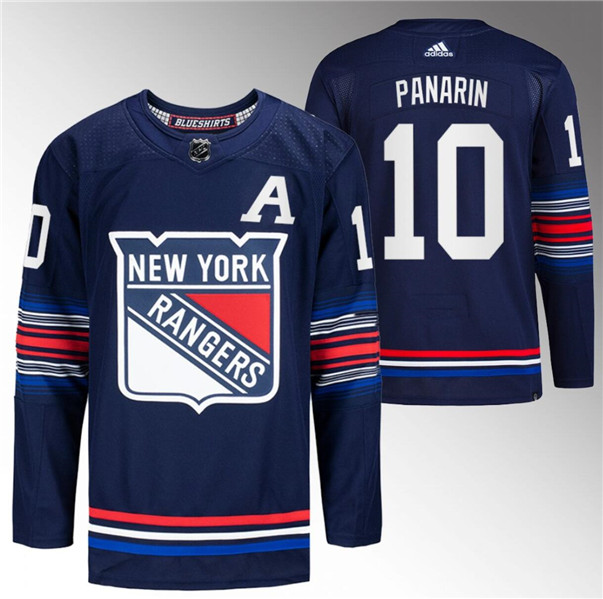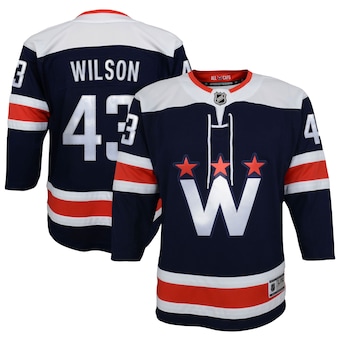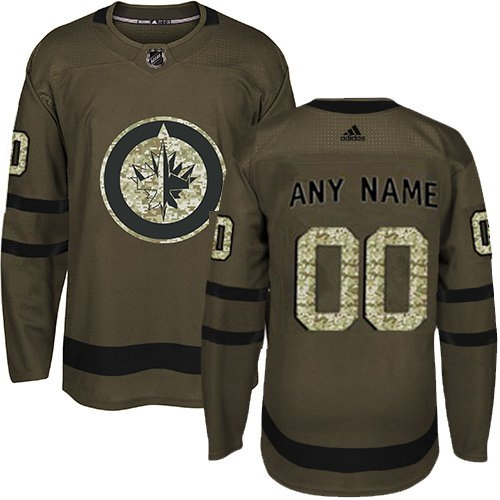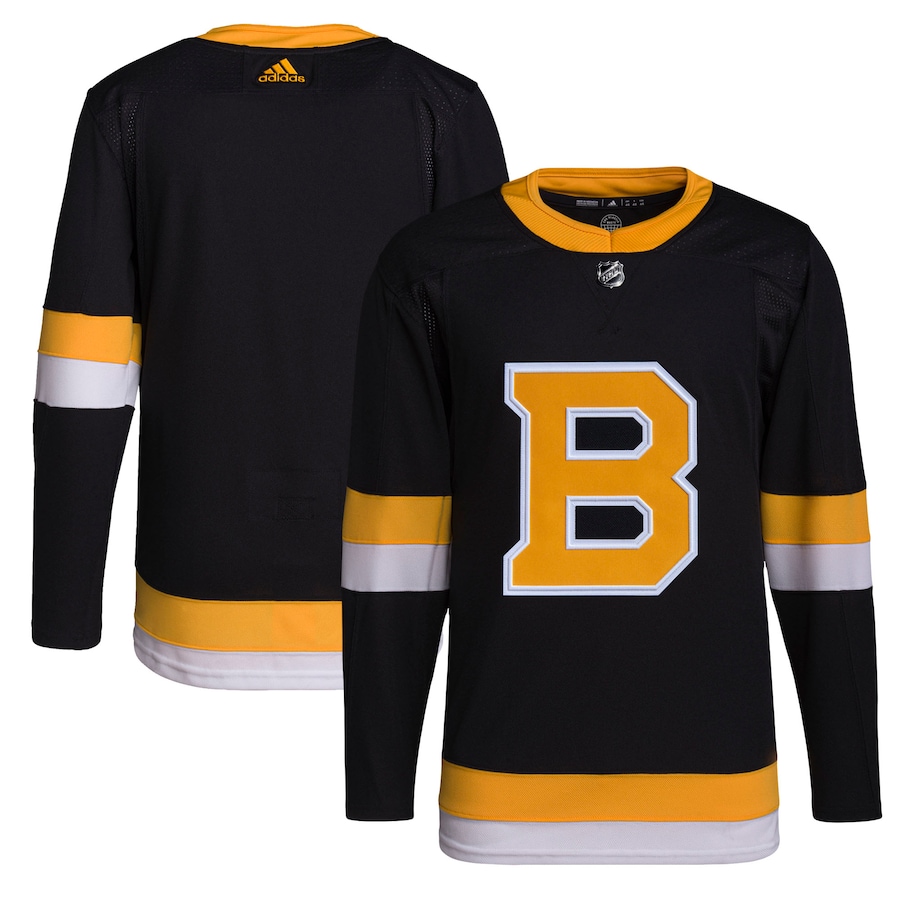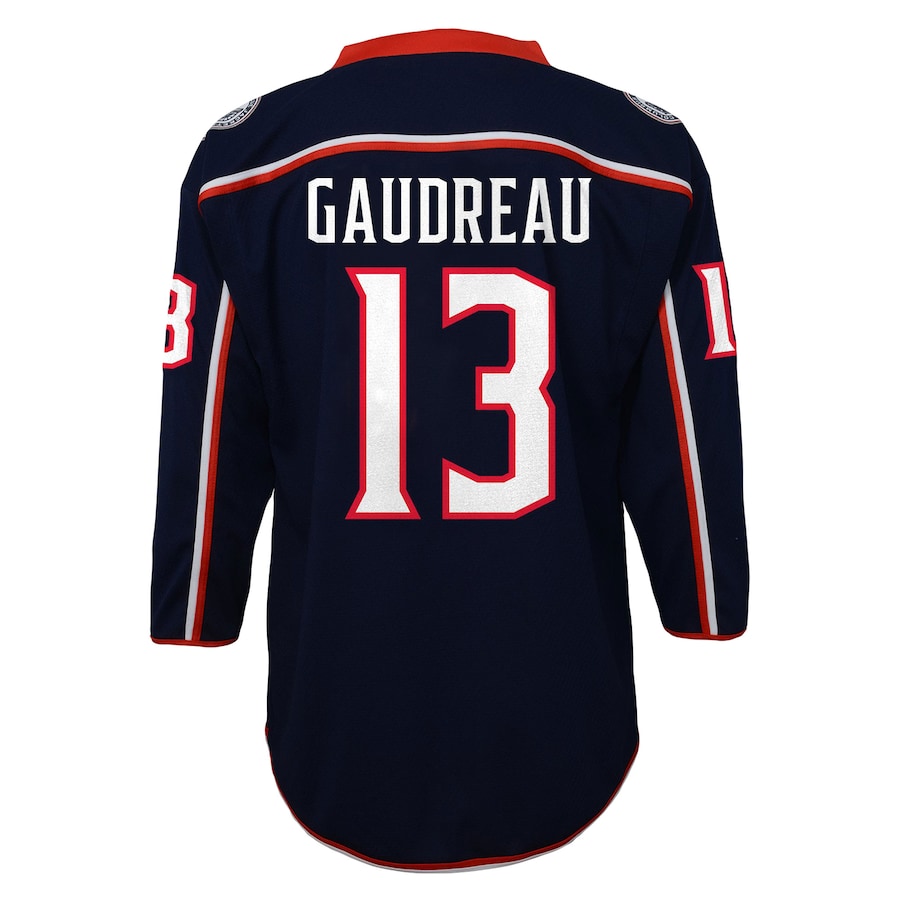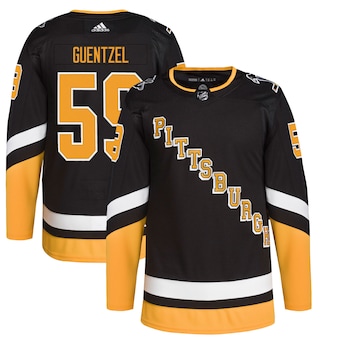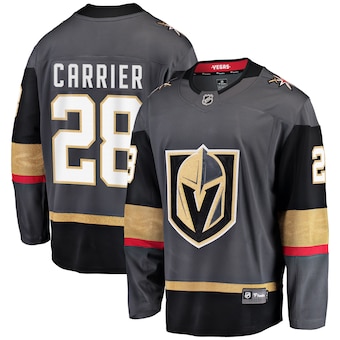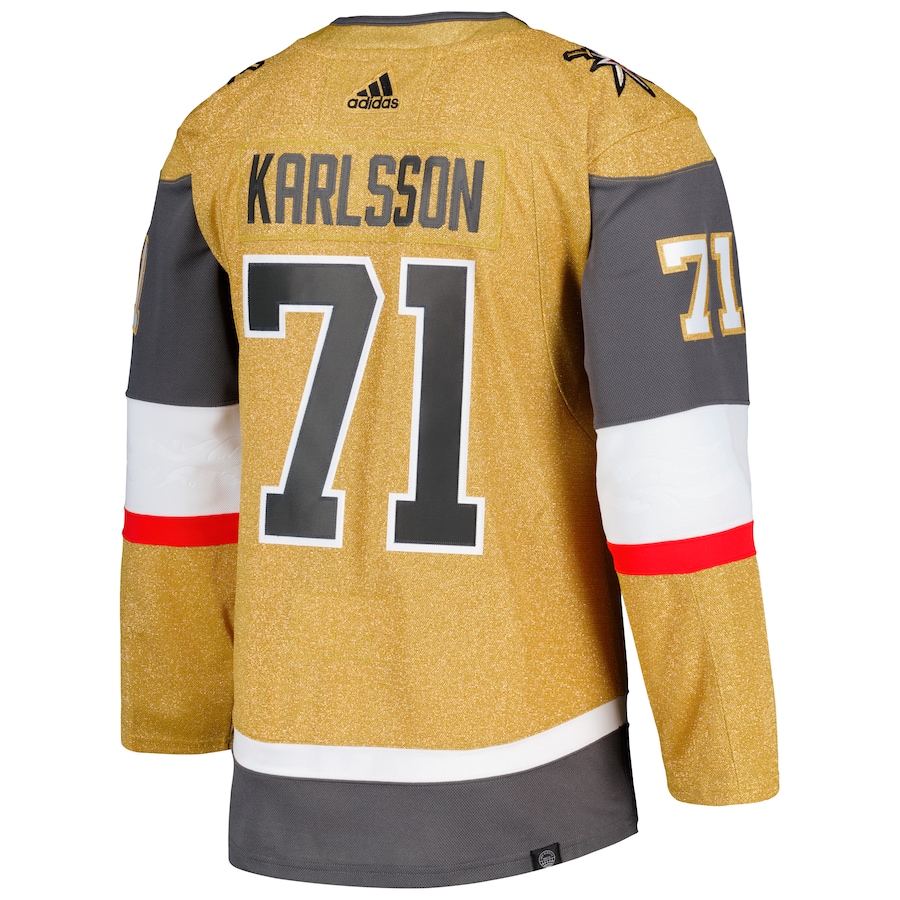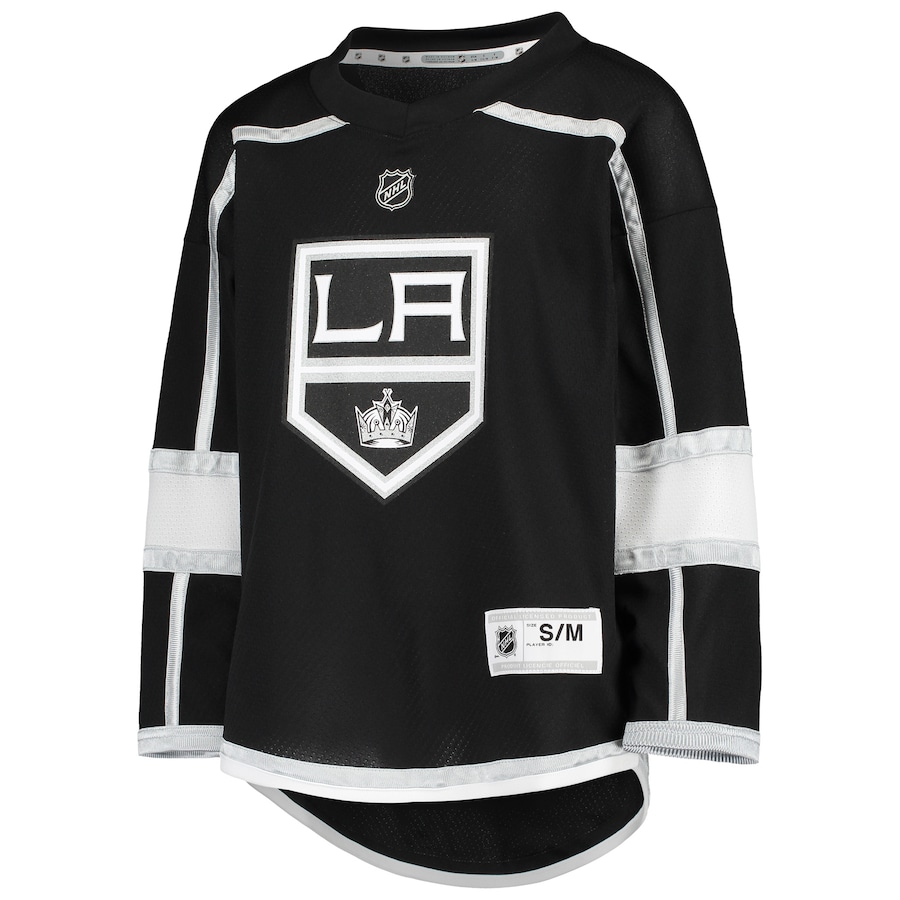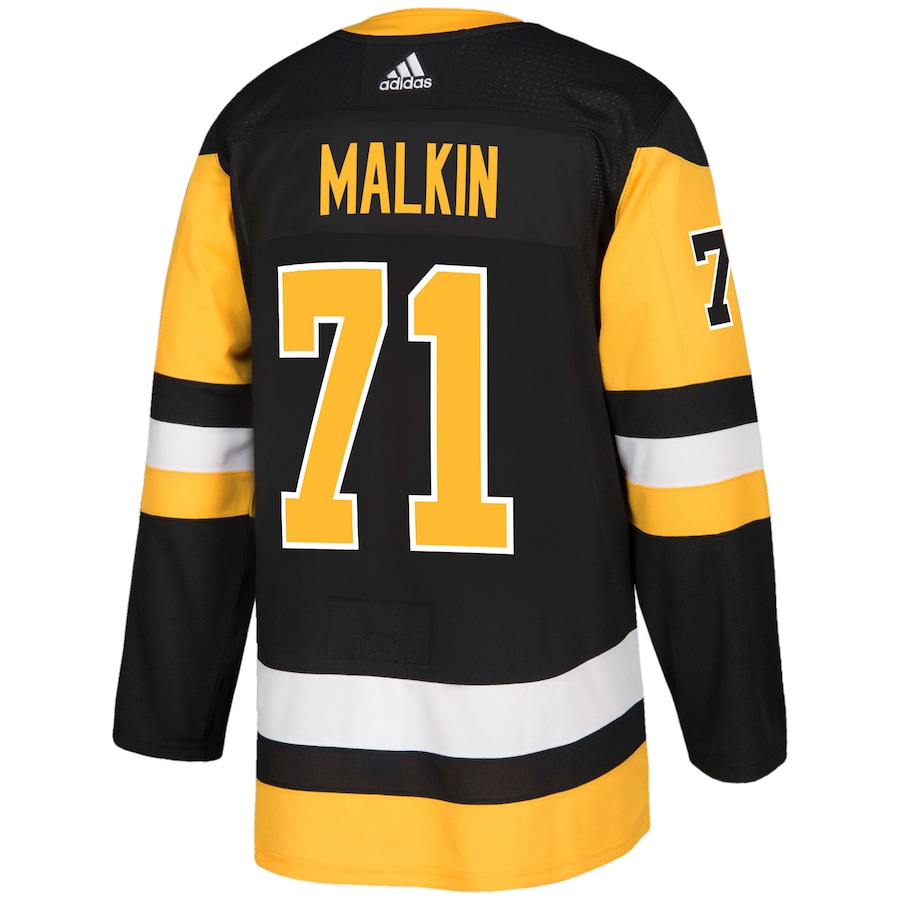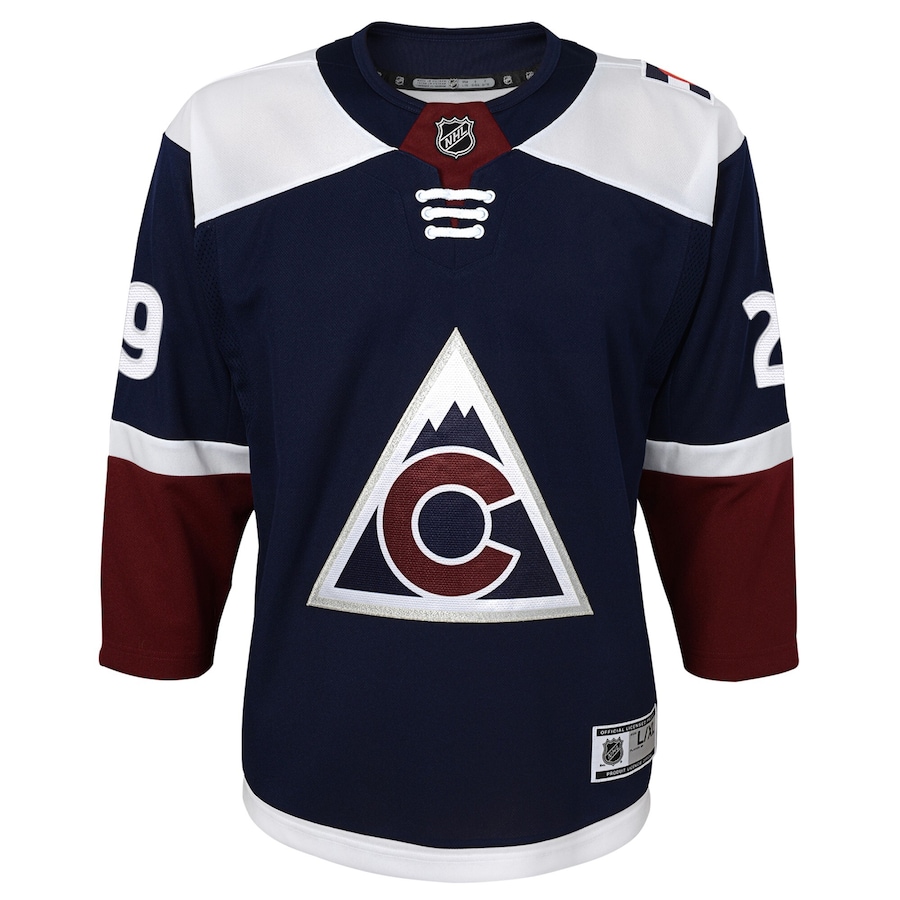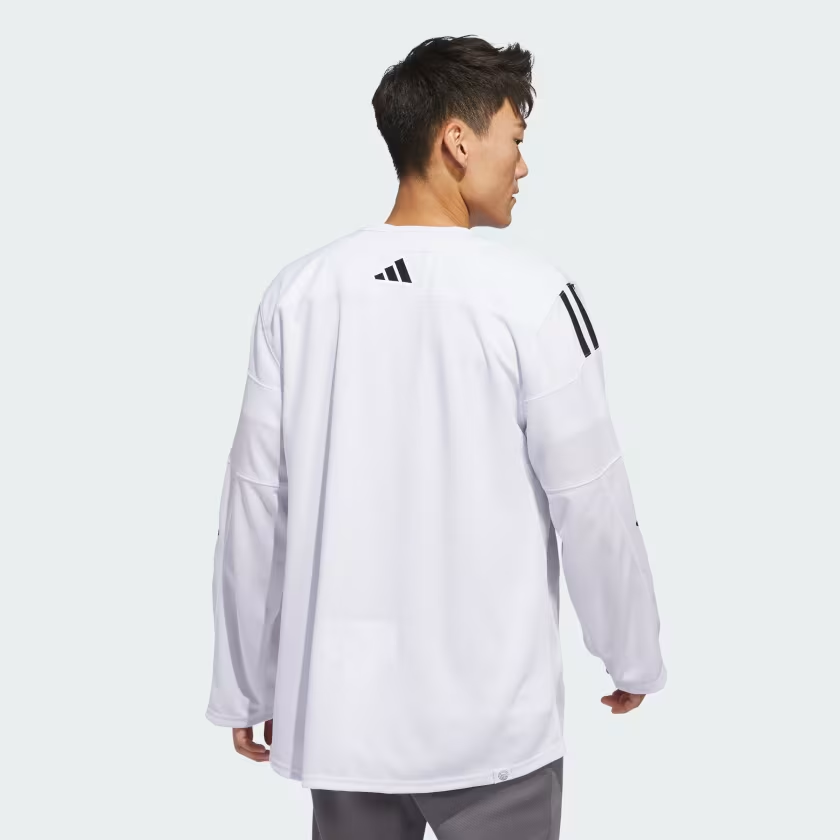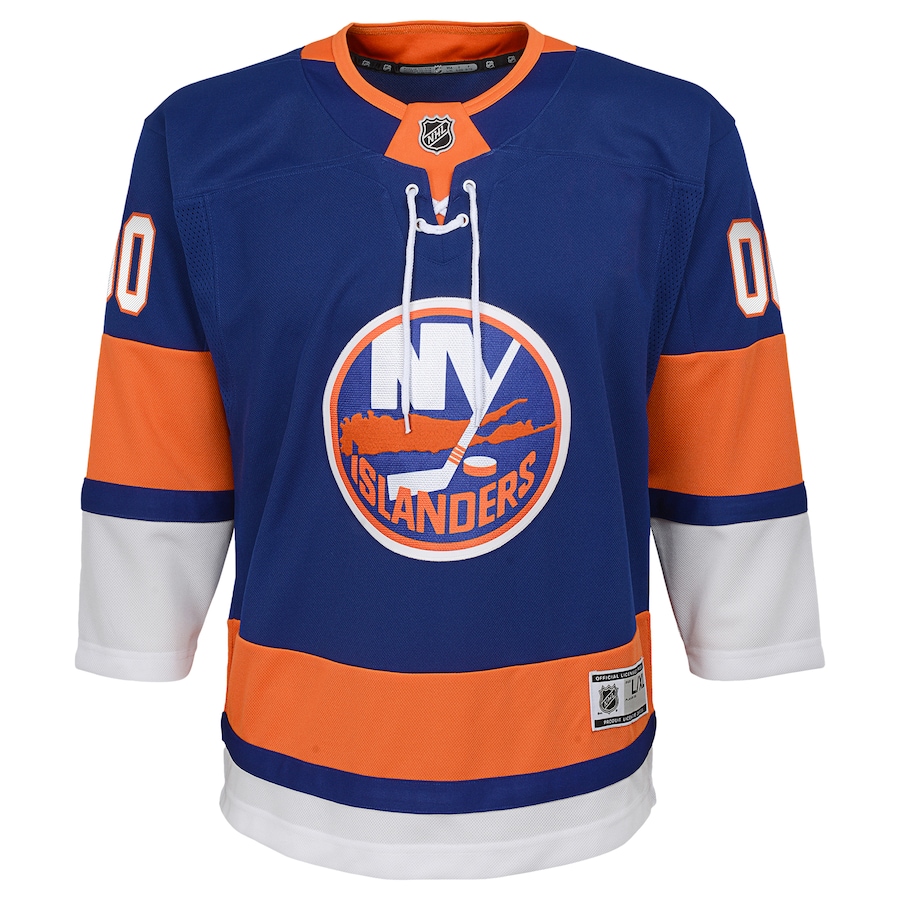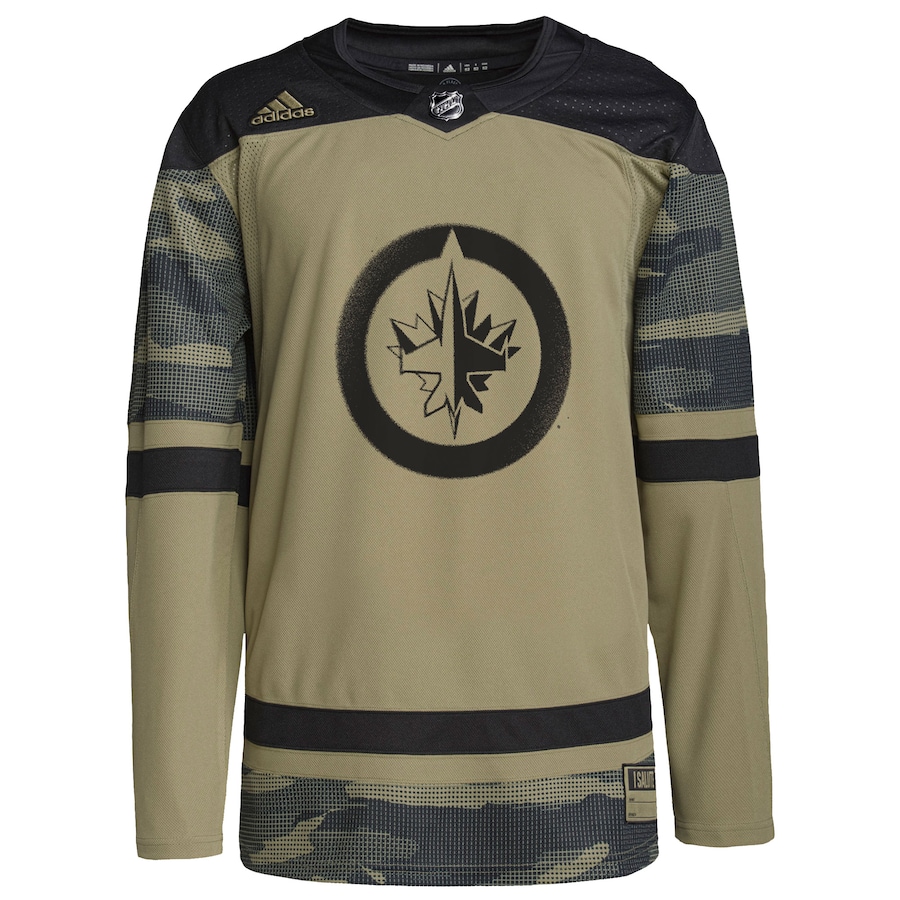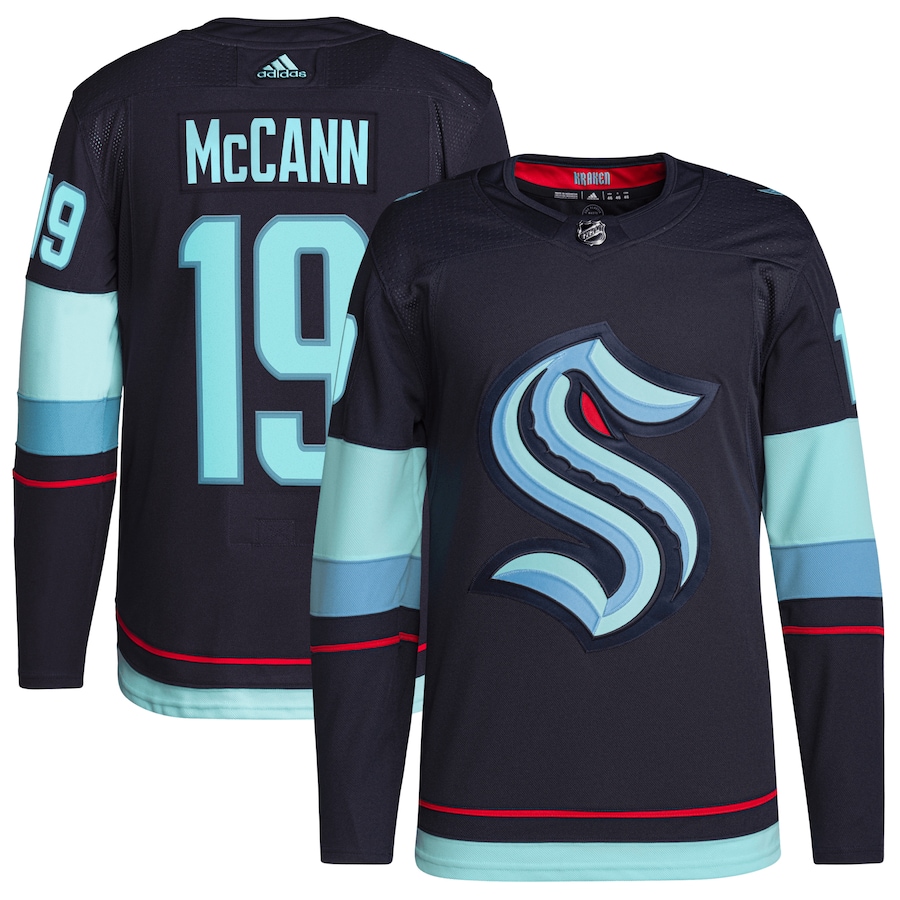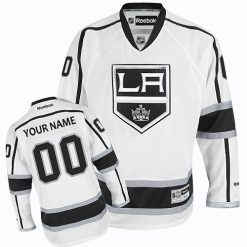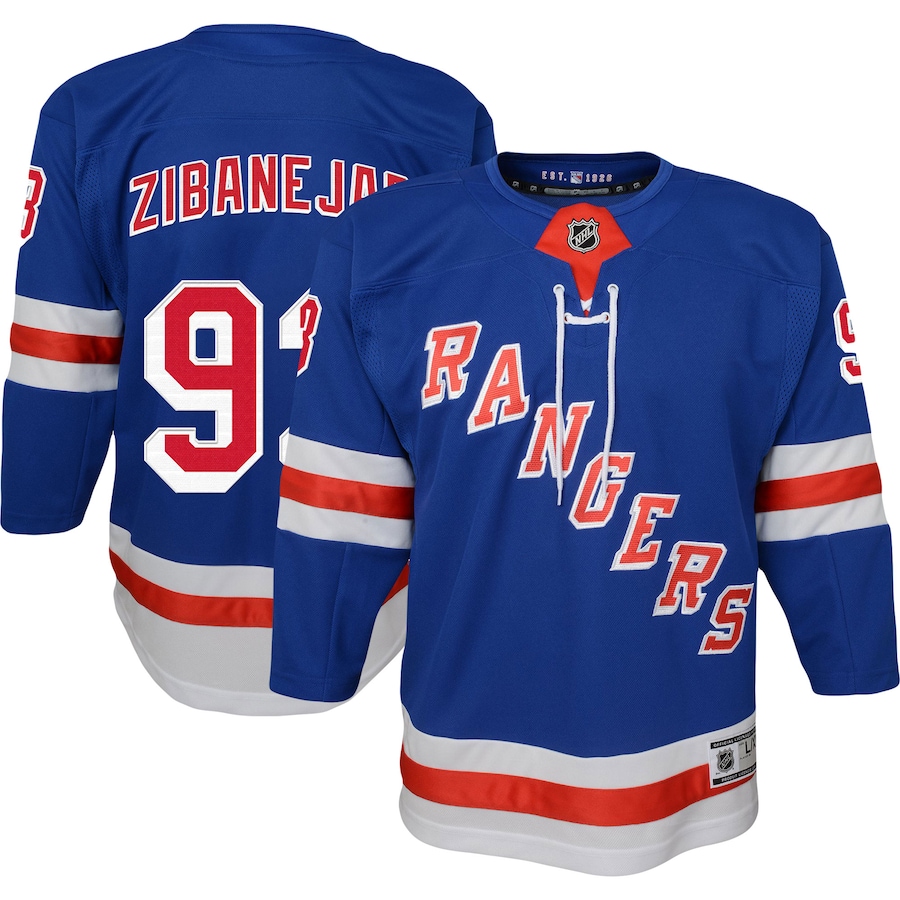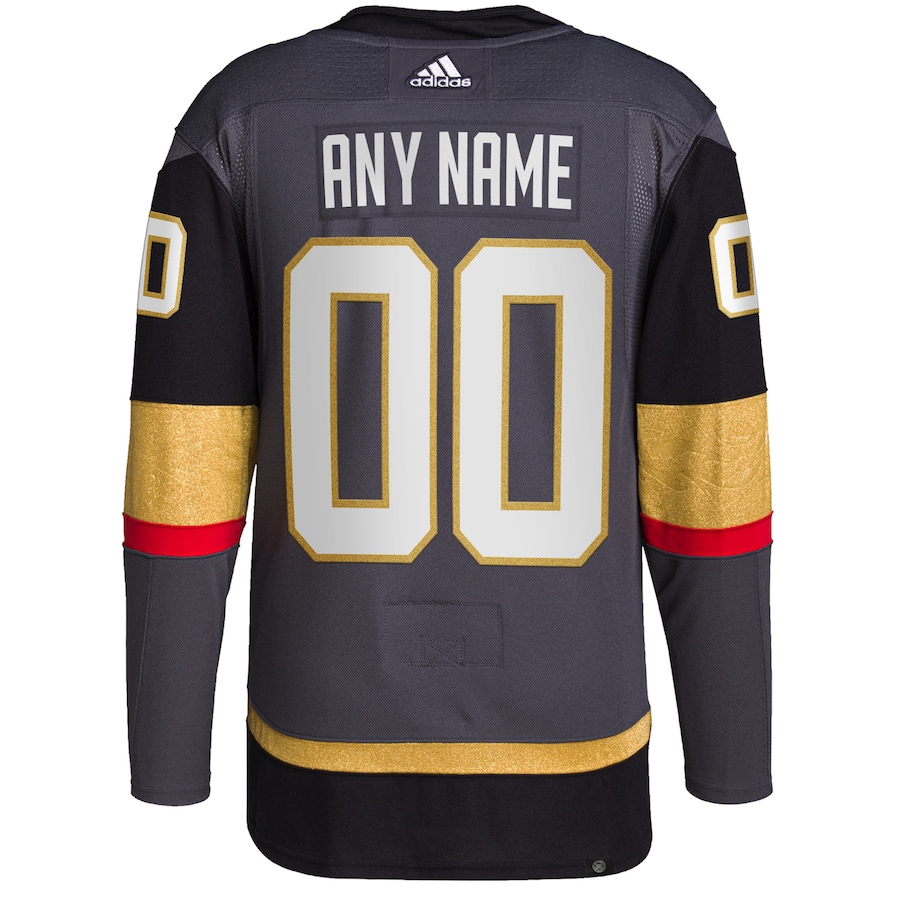Welcome to Scott Wheeler’s 2024 rankings of every organization’s prospects. You can find the complete ranking and more information on the criteria here, as we count down daily from No. 32 to No. 1. The series, which includes in-depth evaluations and insight from sources on nearly 500 prospects, runs from Jan. 30 to Feb. 29.
The Winnipeg Jets’ pool is led by a core group of 5-7 prospects who match up well against a few of the teams ranked in front of them in this year’s countdown. But a relative lack of depth beyond that nucleus keeps it an above-average, good-but-not-great pool on the whole. Still, it’s definitely closer to the top 10 than the bottom 10.
2023 prospect pool rank: No. 13 (change: -3)maillot lnh personnalisé ottawa
McGroarty’s one of those kids who just looks like a pro hockey player. If he walked into an dressing room tomorrow, he would stand as strong as some in it. Then you add in the charisma that made him the natural choice for the captaincy at the U.S. NTDP and with this year’s gold medal-winning world junior team, the light and energy that oozes out of him, and you have to be careful not to put too much stock into the off-ice pieces of the puzzle that he already appears to have figured out. But I think he’s a darn good hockey player and the pieces of the puzzle fit together nicely on the ice as well.
He’s a better skater (it doesn’t look the prettiest through his first few steps, but there’s some power when he gets going nonetheless) than he gets credit for and his spatial awareness, reads and effort level help him avoid losing short races. He’s got raw skill that shows up in his great hands and feel on the puck as a passer. His finishing touch around the net is there in spades, with a hard one-touch shot that he leverages his strong frame to power through when he gets open in the slot. He has always been a sneaky-good facilitator who passes the puck really well and can hold it.
He has particularly mastered the net drive into a high rotation away from coverage that brings him back to around the net. And then when he gets there, he’s got the strength to shoot from bad postures/off balance. He always seems to put his shots into good locations (along the ice, low blocker, high short side), tooblues st louis db. He’s dexterous. He’s a tone setter. I’m a big fan.
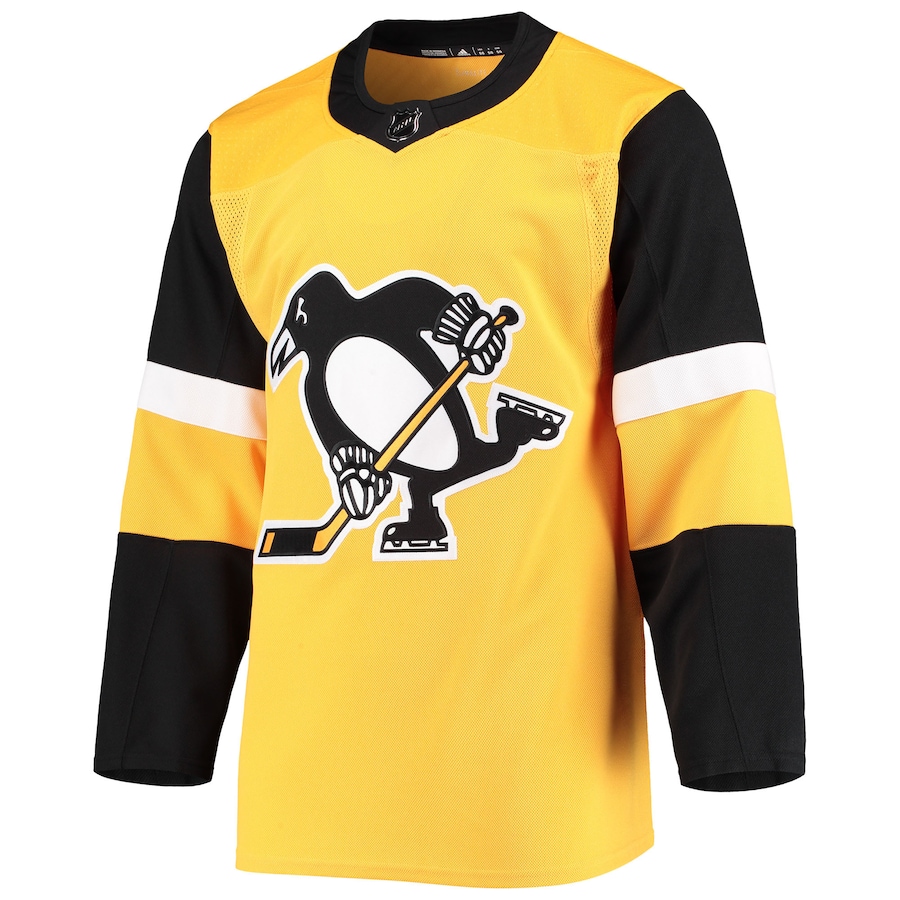
The ice normally tilts in his favour, he’s such a smart player, he can score, he works, and he just understands where to be out there and how to put himself in positions to create offence. He has also reinforced his strong statistical profile from the NTDP at Michigan, where he was a point-per-game freshman a year ago and has played above 1.5 points per game as a sophomore this year despite a pretty severe injury in the fall (a broken rib and punctured lung). As I write this, he leads the Wolverines in scoring despite having played five fewer games than his peers.
If he can get a little quicker from the jump, he’s got all of the other makings of a legitimate top-nine forward who can play up and down a lineup with a variety of player types. I think he might be ready to turn pro at the end of this season, too.
After an up-and-down couple of seasons for Lambert who — across five teams, four levels, three world juniors, the pandemic, injuries and illnesses — showed some really nice flashes of the skill and skating that made him one of the biggest names in his age group growing up and also played extended stretches where he looked like he didn’t know who he was or how to impact a game, things have started to click and he’s been pretty consistent (not a term often used about him) for a player his age in the AHL this year.
Lambert’s gifts are undeniable. He’s a beautiful skater. His hands flow in sync with his feet. When he’s feeling good, he’s fearless with the puck, makes a ton of plays in control, and looks to dictate in possession. He’s got excellent control of his outside edges which allows him to carve up coverage on cutbacks and carries. He’s slippery because of his ability to spin away from his man and make a play. He’s a good passer off his backhand.
He’s capable of playing pucks into space, getting to the interior, splitting lanes and cutting off the wall aggressively, and has a low base to his stride that allows him to extend plays (though he does have a bit of a hunch to his posture, which can put him off balance). He is capable of playing the point and half-wall on the power play because of his puck skill, dangerous wrister off the flank and playmaking instincts.
But there’s a difference between ability and know-how or execution. Some scouts have worried about Lambert’s game without the puck in terms of both his intensity off of it and his ability to make things happen offensively when he’s not getting a ton of touches (I actually think playing him at centre full-time both in the WHL last year and then with the Moose, instead of bouncing him between the wing and the middle, helps to keep him more involved). Others have worried about how often he has skated the puck into trouble and made his decisions too late at times during his career.
With it, Lambert’s a multifaceted threat who blends impressive puck skill with standout all-around skating mechanics and an attack mentality that can complement a dangerous curl-and-drag shot (which also complements the short stick he uses).

There has been a boom-or-bust prognostication for him because of some of the inconsistencies and the requirement that he’s going to have to play in a top-six role in the NHL. But I believe in his ability with the right development and he has slowly begun to build more of an identity to his game. It can feel like he’ll follow a shift where he has the puck four or five times with one where he’s not processing things quickly enough or making bad decisions, but those brain cramps and bad habits have also begun to show up less and less.
One of the more impressive 2005s in the OHL throughout his two and a half seasons in the league so far, Barlow scored 35 goals in 66 combined regular-season and playoff games as a rookie in the OHL, was named captain of the Attack for his draft year, scored 49 goals in 63 combined games last season (both rare goal scoring for a player his age, and a rare honour for a player his age), and has played at a 50-plus-goal pace this year after starting slow and then missing time with a back injury (after a disappointing under-18 worlds while also dealing with a nagging injury).
Barlow plays a direct, intentional game built around good hands, a physically mature pro frame and an NHL shot (he can cleanly beat goalies from midrange). He’s also an able penalty killer, which could give him all-situations upside at the next levelblackhawks de chicago illinois. He has a high floor and should safely become a strong third-line player but also has the upside to become more if he can develop more of pace for the next level. Still, though he is a dominant junior player, it’s also fair to ask if his advanced growth gives him less runway for improvement (he really does look like a man already). He’s also not fast despite his strength, although he has made progress in his skating and does at times look powerful in straight lines once he builds speed (he moves just fine through his crossovers and can build momentum that way, but he isn’t quick from a standstill). I would like to see him tunnel-vision a little less and open up his plane of sight a little more as well. Even though he can score on them, he takes low-percentage shots a little too much for my liking off the rush (maybe because he feels he can’t take the D one-on-one so he shoots through them instead?). The pro build, mentality, competitiveness and scoring are very appealing though and should translate into a top-nine scoring winger who brings it shift to shift.
After lacking continuity in his health across his two years at the program, the injury bug has followed Lucius from the NTDP to the University of Minnesota, Portland, and even Manitoba. The season-ending shoulder surgery with the Winterhawks right as he was starting to look like a star prospect again, followed by a season-ending ankle injury with the Moose, are particularly hard blows (all of this after dealing with knee surgery to help correct a bone lesion which nagged him at the program).
The growing injury history worries me, for sure. But Lucius remains a talented player and finisher who has shown some scoring upside when healthy. I grew fond of the player and the kid in his time at the program, and there have been real stretches in every season where he looks like a high-end offensive player.
He’s a multifaceted scorer. He’s got natural, midrange finishing ability. He’s got a unique ability to change his angles in a split second (thanks to lightning-quick hands) and shoot around sticks and feet. And he’s got an opportunistic sense for spacing and timing/instincts so that he scores his fair share of goals — like every good goal scorer — by simply sliding into scoring areas, finishing rebounds, or getting open into pockets of space around the net just as his linemates are looking to pass. He’s got an underrated nose for the net and is all around the crease when he plays against his peers — something that should come in the pro game as he gets stronger as well (though he needs to stay healthy to do that). He gets the puck off so quickly.
He’s not an explosive skater, though, which leads to apprehension among some scouts as to how his finishing ability will translate at NHL pace, but I think his feel for the game and talent could supersede that in the next stage of his development. He’s also an underrated playmaker and passer who understands how to play pucks into space when he draws pressure. He can find pockets inside the offensive zone to get open into when he doesn’t have the puck and uses opposing defenders as decoys when he does.
There are times when I’d like to see him create more of his own looks but with the right linemates and good health, I expect him to get back on track toward a top-six scorer projection. If not for the injury troubles, he might’ve ranked higher here by now.
Heinola’s got a strong foundation of quiet skills that have grown louder and louder at lower levels over the years in the AHL but still haven’t latched on in the NHL, where he seems to revert back to the simpler style he played earlier on in his career back in Finland. He reads and defends odd-man rushes well, timing his slides and closes smartly. He has always played a patient and poised two-way game built on efficiency rather than flair (though, again, at his last two world juniors and periods in the AHL he has played with some real ambition in stretches). He’s got four-way mobility which helps him escape pressure within his own zone and break teams down inside the offensive zone at the AHL level. He plays a “heads-up” game. And he has shown he’s capable of playing an attacking style at lower levels to really look to dictate play more (while still taking what’s given). He’s capable of being aggressive and intentionally carrying the puck deep into the offensive zone, activating with his feet instead of an outlet, or looking to spin off checks or create through tight seams with some ingenuity. I’m confident he’s got more to offer at the NHL level than we’ve seen to date, though this will be his last year on this list due to his age (he turns 23 next month). I still believe he can be a No. 5-6 rather than a No. 7-8 as a third-pairing guy who can help out a five-man unit in a variety of ways at even strength and run PP2 if needed. The clock is starting to tick on him taking and holding a job, though.
Salomonsson was off to a really positive start to his post-draft season in the SHL last season and was bound to make Team Sweden for the world juniors before a late-November ankle injury halted his season. It was particularly noteworthy after he was just OK in his draft year and didn’t take the steps many hoped he would, sliding out of first-round consideration and into the second round where the Jets took him. You don’t often see teenage defencemen play 16-20 minutes a night in the SHL, but that’s what Salomonsson was doing last year before he got hurt and he has continued to play those minutes this year. He was just two weeks away from eligibility for the 2023 draft with his Aug. 31 birthday, too, so had his pre-injury play in the SHL last year been in his draft year, he would have been viewed differently.
He’s a tremendous north-south skater who can join the rush with ease off of the puck, skate it down ice when he has it, and close gaps quickly to play a physical and tight-defending brand of hockey and funnel opposing carriers wide into rub-outs along the wall. If he does get caught down ice trying to involve himself, he tracks back easily.
His decision-making does need some tightening up at times and has gotten him into suspension issues both in Sweden (in the SHL and J20) and internationally (now at the U18 and U20 worlds) but his reads in other areas of the game have improved. I like his comfort level under pressure and confidence for a player as young as he is. He moves really well in all four directions, he involves himself in a lot of plays offensively, he’s got a pro frame and build, and most of his finer skills (including his shot and his handling) get good grades. He closes and snuffs out a lot of plays and projects as a two-way top-six defenceman at five-on-five who may be able to help out on either special team in a pinch. It doesn’t hurt that he’s a 6-foot-1 righty, either. His problem at times in the past has been that his actual tools were better than the way he utilized them. That was something I was comfortable betting on when I ranked him 39th on my final draft board for 2022 (the Jets took him 55th), though, and I think he has figured out what he needs to be at the next level.
Chibrikov, like Lucius, Lambert and Salomonsson before him here, was a kid who ranked higher on my board than where the Jets grabbed him at the draft. He’s one of the kids whose stock would likely be higher post-draft and pre-AHL had Russia been able to participate in the two world juniors he would have been a part of (he impressed in his brief showings at the first iteration of the 2022 world juniors, where he looked like Russia’s second-best forward for my money through two games after Matvei Michkov). Though he never quite broke into the KHL before coming, Chibrikov, who only turns 21 tomorrow, was a top player in his age group at the MHL and VHL levels and has been immediately productive as an AHL rookie this season (though his results defensively haven’t been at the same level).
He’s a talented offensive player who, when he’s involved in the game and playing confidently, looks to take over and has the tools to do so. Chibrikov plays a direct, intentional game that looks to attack at and through pressure, create his own chances, and drive play to the inside when he has the puck. When he’s engaged in the fight and keeping his feet moving, there’s a lot to like about his ability to impact a shift (both by ramping up the pace with his skating or slowing the game down to play a little more calculating) in a variety of ways as an equal part finisher and playmaker. His play off the puck as a 5-foot-10 winger might never be a strength, but he has shown a willingness to engage in battles and compete against pros in the AHL this season even if he’s not winning the majority of his engagements or providing defensive value. He projects as a middle-six winger with some skill if he continues to develop but there might also be some risk that he becomes a tweener as an AHL producer who doesn’t quite have the chops for that kind of a role in the NHL.
There’s a lot to like about Zhilkin. The physical makeup/athleticism is already there. His speed and quick hands both get high grades and can catch your eye. His defensive game has typically been strength (including in the faceoff circle) and even resulted in him playing defence a couple of times in the OHL. But his production never found that next echelon in Guelph like you would have hoped it would for a player with his tools and experience (he was a December birthday who got an extra year in the OHL pre-draft). Some of that was the way his team played in Guelph before his trade to Kitchener, but some of it is also him not making finishing plays as consistently (whether that’s by putting the puck in himself more consistently on the chances he gets, or making that final pass that sets up a goal more regularly) as he should. This year, in the AHL, it has been an adjustment for him. He can skate at the pro level. The rest is still a work in progress. The goal with Zhilkin should be to turn him into a call-up option who can fill in at the bottom of a lineup and then go from there.
After building a strong statistical track record as a 6-foot goalie, the Jets drafted Milic in the fifth round as an overager. In 2020, he was named the top goaltender in the CSSHL’s U18 loop. In 2021, he played well in a small sample due to the pandemic for both the Seattle Thunderbirds and Team Canada at U18 worlds (as the backup). In 2022, he was named to the WHL’s U.S. Division Second All-Star Team. In 2023, he won the WHL’s goaltender of the year award, was named to the CHL’s First All-Star Team, backstopped Canada to gold at the world juniors, and backstopped the Thunderbirds to a WHL title as the league’s playoff MVP. That’s a pretty compelling case that he’s a solid, worthwhile goalie prospect, and he has followed it up by playing well in his rookie season at the pro level split between the AHL and ECHL.
He’s nimble on his feet. He battles in the net. He tracks pucks well through traffic and finds pucks on scrambles. He holds his outside edges well one-on-one with shooters. Despite his size, he covers the posts and corners well from bad angles. He controls his rebounds in front of him or into the corner really well. Sure, his size is a talking point, but he’s a good goalie and I won’t be surprised if he plays himself into NHL games at some point down the line.
After playing professionally in Belarus’ top-flight Extraleague A and grabbing some limelight for his skill level (and a lacrosse goal) at U18 worlds in his draft year, Kuzmin became a top offensive defenceman in his two seasons in the OHL to get signed. His jump to the pro game has run into some challenges this season, though, highlighting questions about whether he has the skating and defensive chops to make it as a 5-foot-10 defenceman.
He can play both sides. He wants to create offence and can do so with his hands, creativity and passing. When pressure comes, he’s looking at ways he can step around it instead of ways he can get rid of it. There are times when that puts him into tough spots and he tries one too many moves to beat the second layer of pressure that follows, but he’s got the side-to-side mobility (he’s fairly agile on his edges without being explosive moving forward) and the inventiveness to problem solve and attack. I’m also fond of the way he plays his gaps, which includes tight spacing and constant stick-to-stick disruption, though because his skating isn’t high end he has had a tougher time playing that game effectively against pro speed. Though his game will always tilt toward offence, his play defensively will be the deciding factor in his outcomes (I liked it better than I expected to in the OHL but that hasn’t yet held up). And while he’s on the smaller side for a defenceman at 5-foot-10, he’s strong for his size (though some of the weight he carries does impact his skating). I see a future as an AHL offensive defenceman but he’s a bit of a long shot to become an offensively inclined third-pairing defenceman.
Drafted with one of the final picks in the 2022 draft, DiVincentiis was one of the more consistent goaltenders in the OHL from his rookie season in 2021-22 through to the end of his post-draft season last year, which earned him a CHL Second All-Star Team nod and the OHL’s goaltender of the year award. This year has been a difficult one, though. Despite a winning record with the Battalion, he has really fought it in some of my OHL viewings and had a tough go at Canada’s selection camp for the world juniors.
DiVincentiis is a fairly mobile 6-foot-2 goaltender who moves to pucks to make his saves but doesn’t have to scramble as much as young goalies who play that style typically do — and then battles to stay in plays when he has to. His tracking and focus can get the better of him, though, and I’ve seen a few too many goalie squeaks through him this season, and a few too many moments where he doesn’t look set and ready. I find he goes down early, too. He’s got to rebuild his confidence in the net again. He has seemed to round a corner in February, which is a start.
Wagner’s a straight-line, honest forward who plays hard, can skate, gets his shot off with balance and leverage in motion (I’d like to see him shoot it a little more because his release is good), can play with good players or checkers, and seems to find a way to be effective. His game doesn’t wow anyone but he’s well-liked among coaches and scouts alike for his pro style and work ethic. I think it’s going to take him some time to go from fourth-line SHL player to top-nine SHL player, and then eventually the same in the AHL, and he’s probably a long shot to reach the last step beyond that which is the NHL call-up conversation, but I like him enough as a sixth-round pick to list him and he’s still young.coyotes de l’arizona
Levis was a point-per-game player on a deep Kamloops Blazers team that won the Memorial Cup last year while playing on both special teams and showing particular proficiency on the penalty kill. This season, after his numbers took a predictable dip on the rebuilding and low-scoring Blazers, he was traded to the Giants at the deadline and played well in a couple of recent viewings for this project (which included a hat trick against Victoria).
He’s got pro size (6-foot-2, 194 pounds), a well-rounded toolkit of average or above-average skills, good sense around the offensive zone, the work ethic you look for in a potential bottom-six player, and just a pretty complete game. He has also played a good amount of centre and wing, which could help him find a role in the AHL (and, maybe in a long-shot scenario, someday the NHL). His skill level and skating aren’t dynamic but he has worked to improve his skating and pace, he’s a smart player, he can occasionally show some creativity as a facilitator, and he checks some boxes as a player whose game will work better at the pro level than in junior. He’s a solid player who uses and plays off of his linemates well.
Here’s that improved skating at work:
As always, each of my prospect pool rankings is broken down into team-specific tiers in order to give you a better sense of the talent proximity from one player to the next (a gap that is sometimes minute and in other cases quite pronounced).
The Jets’ pool breaks down into three tiers for me. They are: 1-4, 5-7, 8-13.
The Moose’s Tyrel Bauer and Daniel Torgersson, the oft-injured but talented Anton Johannesson (that ship has probably sailed, unfortunately) and 2023 pick Zachary Nehring were also considered.
(Photo of Rutger McGroarty: Michael Miller / ISI Photos / Getty Images)avalanche chine
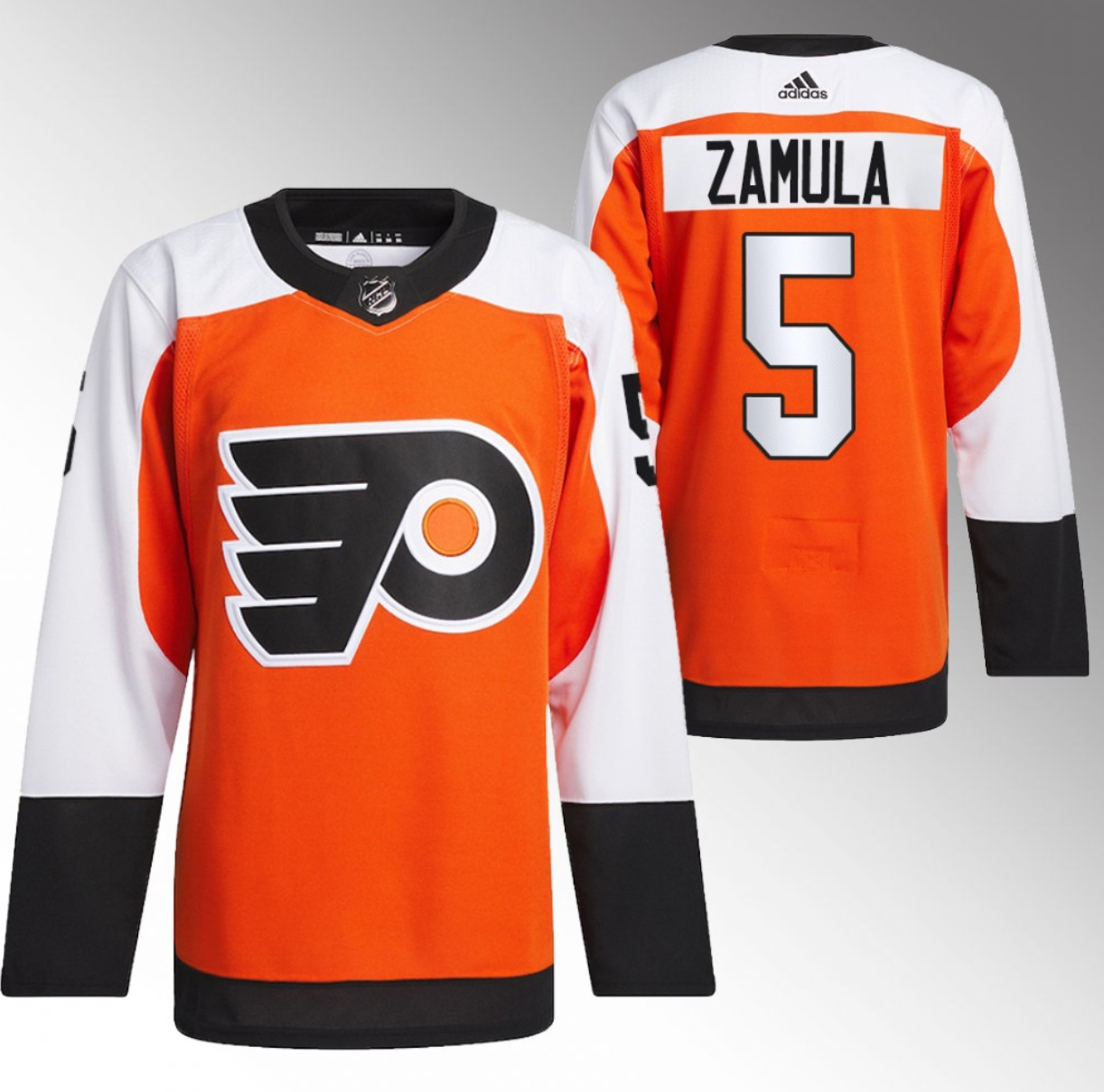
maillot personnalisé des blue jackets de columbus sp panthers floride match avalanche du colorado joueurs 2024
